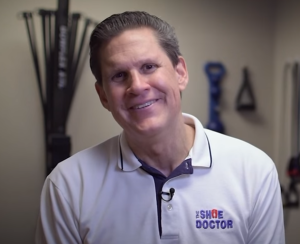If you are one of the many people who suffer from metatarsalgia, you know that it can be a real pain. This condition can cause a lot of discomfort in your feet, making it difficult to do everyday activities. Unfortunately, there are many misconceptions about this condition that can make it even harder to treat. In this article, we will discuss 5 of the most common misconceptions about metatarsalgia and provide some information that may help you better understand and manage this condition.
The Truth About Metatarsalgia
Metatarsalgia is a condition that affects the ball of your foot, and it can be painful. It’s often caused by wearing high heels or ill-fitting shoes, but it can also be caused by other factors like arthritis or an injury.
There are a lot of misconceptions about metatarsalgia, so let’s clear some things up. Here are 5 common misconceptions about metatarsalgia:
Misconception #1: Metatarsalgia Is Only Caused by High Heels.
One of the most common myths about metatarsalgia is that it is only caused by high heels. While it is true that wearing high heels can contribute to the development of metatarsalgia, it is not the only factor. For example, spending long periods standing on hard surfaces, having a foot injury, or suffering from arthritis can all cause metatarsalgia. Other risk factors include having bunions or hammertoes, being overweight, and participating in activities that put stress on the ball of your foot.
Misconception #2: Metatarsalgia Only Affects Women.
While metatarsalgia is more common in women than men, it can affect anyone. This is because women tend to wear shoes that are narrower and have higher heels, which puts more pressure on the ball of the foot. Men are also more likely to be overweight, which is another risk factor for metatarsalgia.
Misconception #3: Metatarsalgia Is a Serious Condition.
Metatarsalgia is not a serious condition and does not typically lead to long-term complications. In most cases, metatarsalgia can be treated with simple conservative measures such as rest, ice, and over-the-counter pain medication. In more severe cases, metatarsalgia may require physical therapy or surgery.
Misconception #4: Metatarsalgia Only Affects Older Adults.
While metatarsalgia is more common in older adults, it can affect people of all ages. This is because the risk factors for metatarsalgia (such as wearing high heels and being overweight) are not limited to any particular age group.
The most common cause of metatarsalgia is a mix of various variables. The following are some of these elements:
- Old Age
- Fractures caused by stress
- Morton’s neuroma is a painful and tingling hard tissue growth on the ball of the foot.
- Exercising and training in a high-intensity environment
- A high arch in the foot
- A toe that is slightly longer than the big toe.
- Bunions and hammertoe are two common foot abnormalities.
- Obesity and being overweight
- Weight distribution on the foot is incorrect.
- Support and padding are missing in these shoes.
- A shoe with a narrow toe box is a shoe with a narrow toe box.
- Irritated nerves
Misconception #5: You Need to See a Doctor for Metatarsalgia Treatment.
While it is true that some cases of metatarsalgia may require medical intervention, many people can find relief with simple at-home treatments.
If you are experiencing pain in your feet, there are a few things you can do to find relief. Start by wearing shoes that fit properly and offer support. You can also try using over-the-counter pain medication or icing the affected area for 15 minutes several times a day. However, if your pain does not improve with home treatment or if you have any concerns about your condition, you should see a doctor.
- Find relief for metatarsalgia with simple at-home treatments
- Wear shoes that fit properly and offer support
- Use over-the-counter pain medication or ice the area for relief
- See a doctor if home treatment does not work or you have concerns
What happens during a metatarsalgia evaluation?
Patients presenting with metatarsalgia will often have a similar story. They will report that they have had pain in the ball of their foot for some time, and it has gradually been getting worse. The pain is usually worse when they walk barefoot or in shoes that don’t support their feet well. They may also have noticed a lump or callus on the affected area.
At the assessment, your practitioner will take a thorough history and conduct a physical examination. They will likely order X-rays to rule out any other conditions such as arthritis or a stress fracture. If the diagnosis is metatarsalgia, treatment will focus on relieving the symptoms.
- Painless, fast diagnosis
- Get relief from the ball of foot pain
- Rule out other potential causes of foot pain
- Start a treatment plan to relieve your symptoms
You may be able to alleviate discomfort and avoid a recurrence by replacing your shoes with a well-fitting pair that provides good support. Avoid wearing high-heeled shoes if possible. A rest from high-impact sports or activities might also help. Swimming or cycling are low-impact exercises you could try. A physical therapist may be necessary if your doctor thinks you need one. They can provide you with range-of-motion exercises and workouts to strengthen surrounding muscle groups. If required, the therapist can also assist with correcting your gait.
If your pain does not go away with conservative therapy, you may need metatarsal metopic surgery to realign your metatarsal bones. If pain is not treated, it can cause you to alter your gait, which might have an impact on your hips, lower back, and legs.
Remember, The 3 Arches of Your Feet Still Need Support!
Maybe you have already felt the first symptoms of balance disorders or you want to prevent them from appearing in the first place. Consider getting a foot orthotic device or simply take care of your feet. Start by washing them thoroughly with a gentle soap whenever you take a shower. Being a very complex support system, your feet are your first line of defense against balance-related issues, since their arches provide you with the stability you need in your daily life. It’s time to put your foot down and push back against balance issues. With both feet on the ground, dedicate yourself to keeping them comfortable and healthy. Give us a call and we will scan your feet to make you custom orthotic inserts.
The Shoe Doctor has specialized in providing custom orthotics for 20 years. The right orthotic insoles can greatly reduce foot, knee, and hip pain while increasing performance and comfort. Russell at The Shoe Doctor will help educate and assist you in finding the perfect solution for your particular situation. We will create a 3D map of your feet and make custom orthotics for your hiking boots, everyday shoes, and everything else in between. These orthotics, along with our expert advice, will get you using orthotics like a pro, and have you performing at the peak of your abilities in no time! If you are in the San Francisco Bay Area, give The Shoe Doctor a call to get the best custom orthotics in the area! We are here to assist you, schedule your free consultation here!


